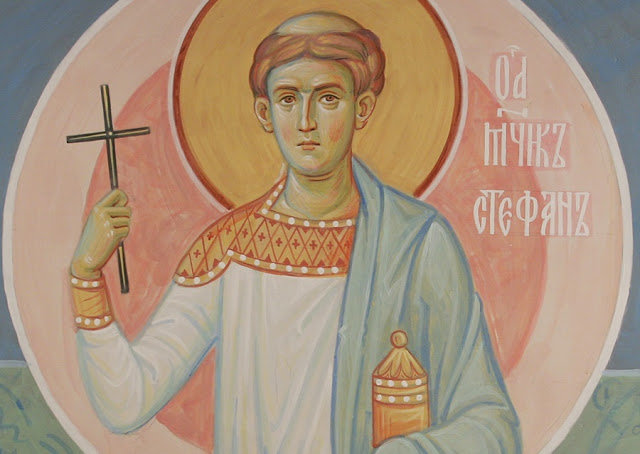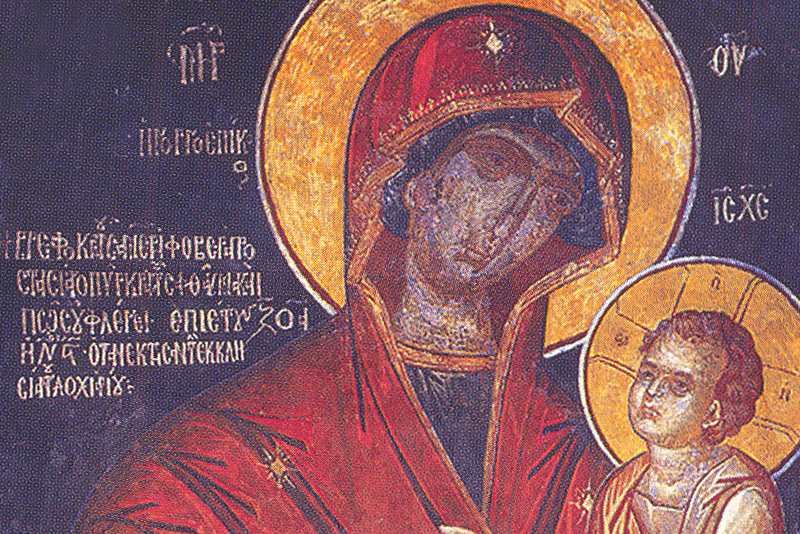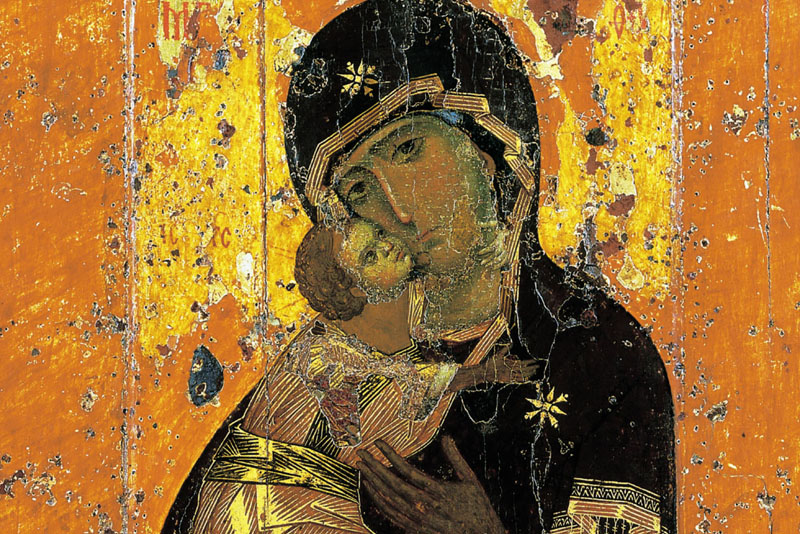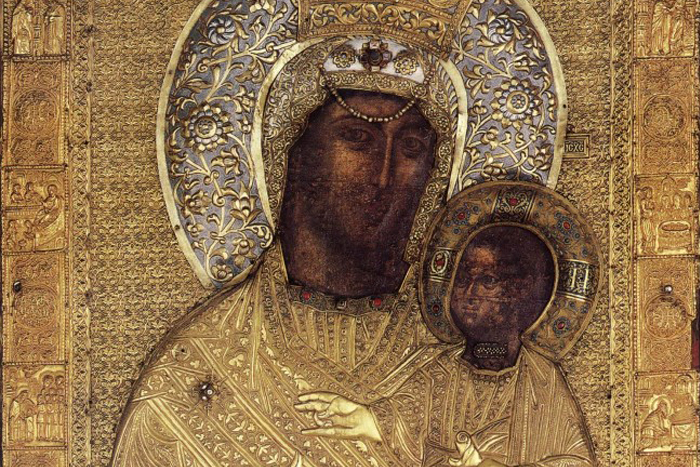
Background
Prince Arcadius, son of Emperor Theodosius the Great, fell from a ship into the sea during a heavy storm near the Vatopedi Monastery of Mount Athos, built in 395. Everyone thought that he had died. However, Arcadius’s companions soon came across the prince who slept peacefully under the shadow of coastal shrubs not far from the monastery. When he woke up, he told them how he had miraculously been spared from an imminent death by the intercession of the Mother of God. In remembrance of this event, the monastery was named “Vatopedi”, i. e. the boy’s bush.
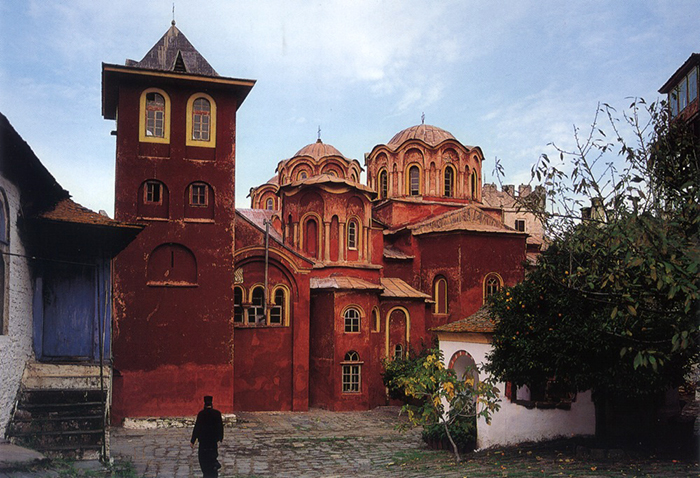
The Emperor Theodosius the Great, having learned about the miraculous rescue of his son, did not just expand, decorate, and enrich the Vatopedi Monastery, but also donated to the monastery an icon of the Mother of God made of mastic. This icon was named Ktitorissa – in memory of the fact that the Emperor was a Ktitor (the Greek word for the founder and chief donor of a monastery). This icon of the Ktitorissa was placed in the Cathedral Church of the Annunciation in the high place of the sanctuary. This gave the icon another name: the Vimatarissa.
In 862, when the Arabs ravaged and plundered Crete, Sicily, and other islands near the Holy Mount Athos and were approaching the Vatopedi Monastery, the ecclesiarch, unwilling to allow them to desecrate Christian sacred sites, concealed the Ktitorissa icon and a cross in a well that was under the altar platform. He put a burning candle in front of the sacred objects and placed a marble slab on top of them, on the same level with the platform. The savages captured the monk himself and took him hostage.
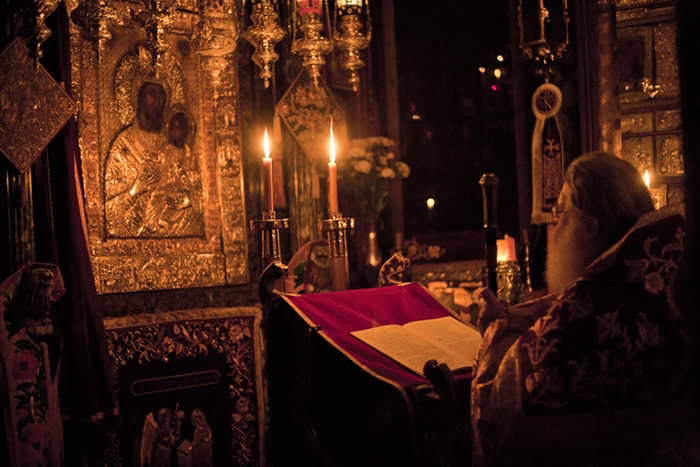
It wasn’t until almost seventy years later that the poor prisoner was released. His soul longed for the place where he had previously served the Lord – the Holy Mount. The once magnificent Vatopedi was now a pitiful ruin. The few brothers worked to rebuild the ruined monastery, and the elderly monk joined them.
Recalling the events of his former life and the circumstances under which he had to leave the Vatopedi Monastery, the hierodeacon showed the other monks to the place where he had hidden the holy icon of the Mother of God and the cross, and requested that one of the altar platform slabs be moved. Indeed, the brethren found underneath it both the icon of the Most Holy Mother of God and the Life-Giving Cross of the Lord. The candle was still burning in front of them.
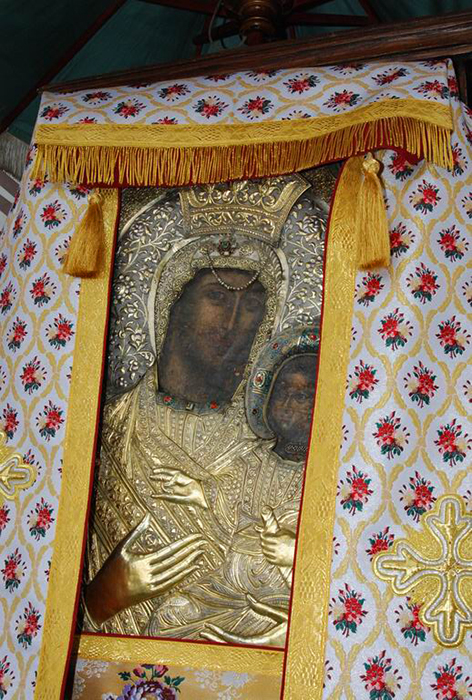
This candle still burns to this day in front of the holy Ktitorissa icon of the Mother of God. The monks add wax to the candle, thus maintaining it from generation to generation.
Since both holy objects were found on a Monday, a solemn moleben to the Mother of God is celebrated in the Vatopedi Monastery on that day, and a solemn Liturgy with the blessing of koliva and the offering of a part of a prosphora in honor of the Mother of God is celebrated the next day. This continuous celebration has been going on for more than ten centuries and is the best evidence of the authenticity of the event, which is deeply imprinted in the lore of the Vatopedi Monastery.
The Ktitorissa icon is now located in the altar of the Cathedral, in its High Place.
Translated by The Catalogue of Good Deeds
Source: https://azbyka.ru/days/ikona-ktitorskaja
Photos from: http://holymountain-agionoros.blogspot.com/2012/04/0052-miraculous-icon-of-panagia.html

